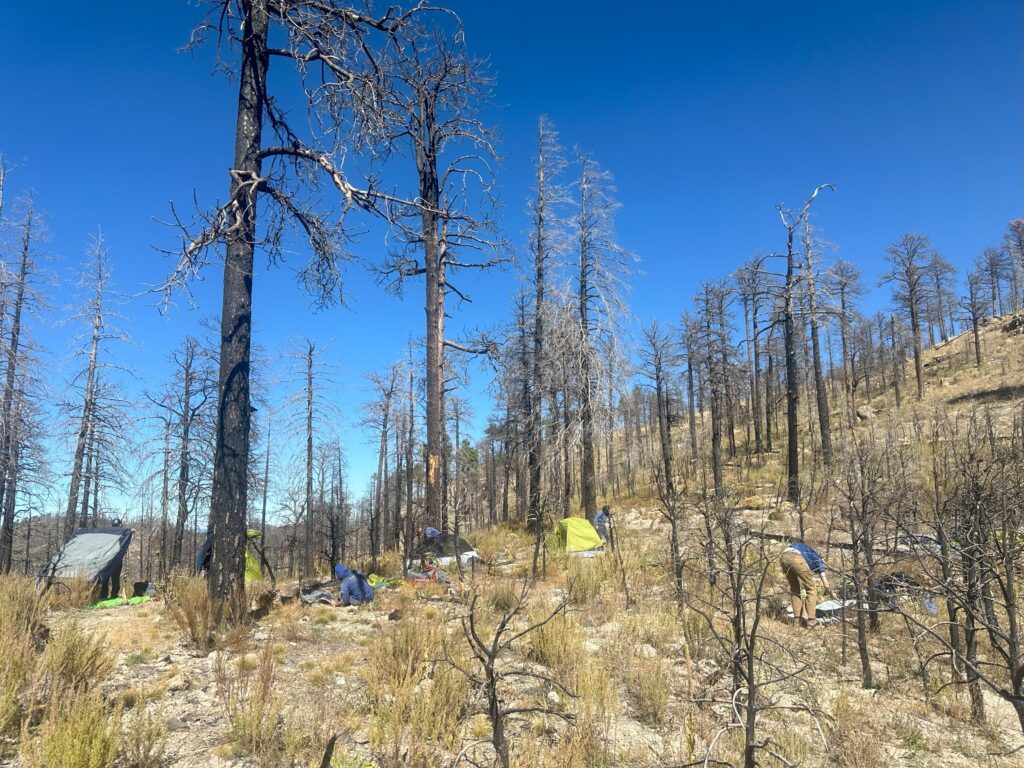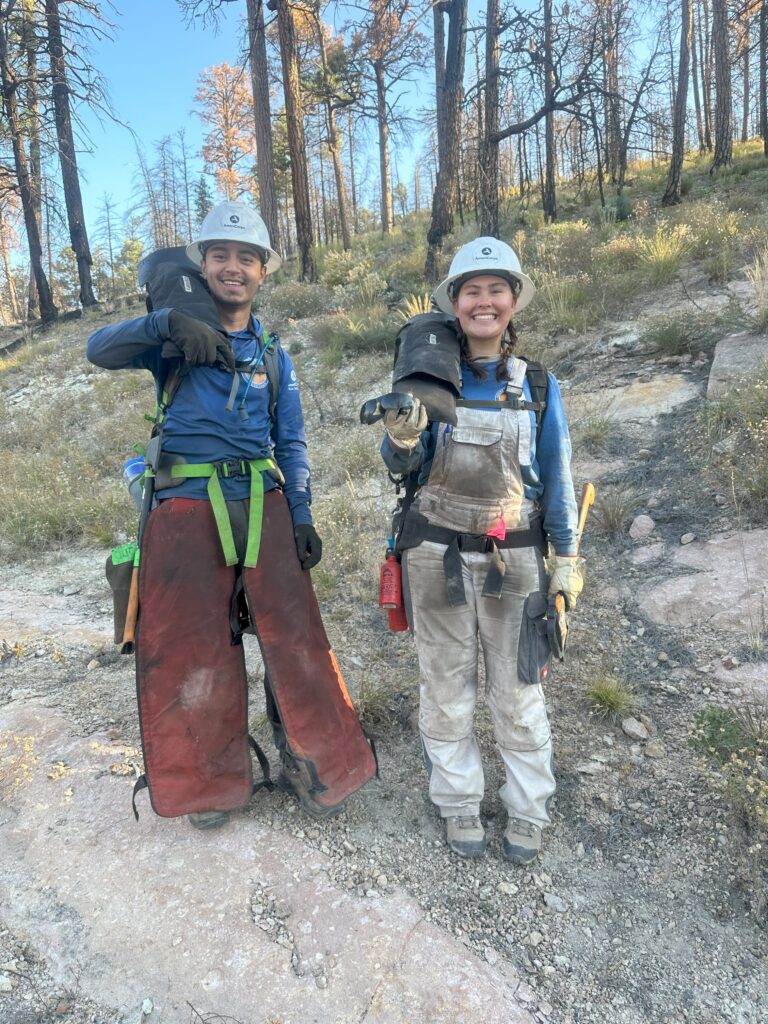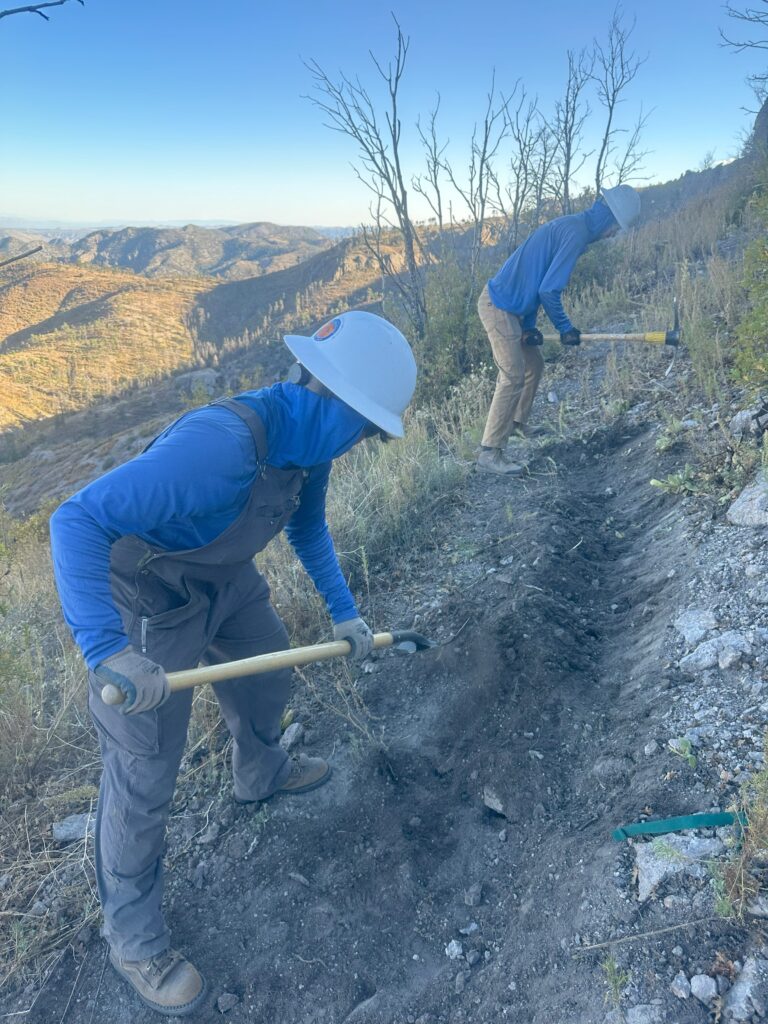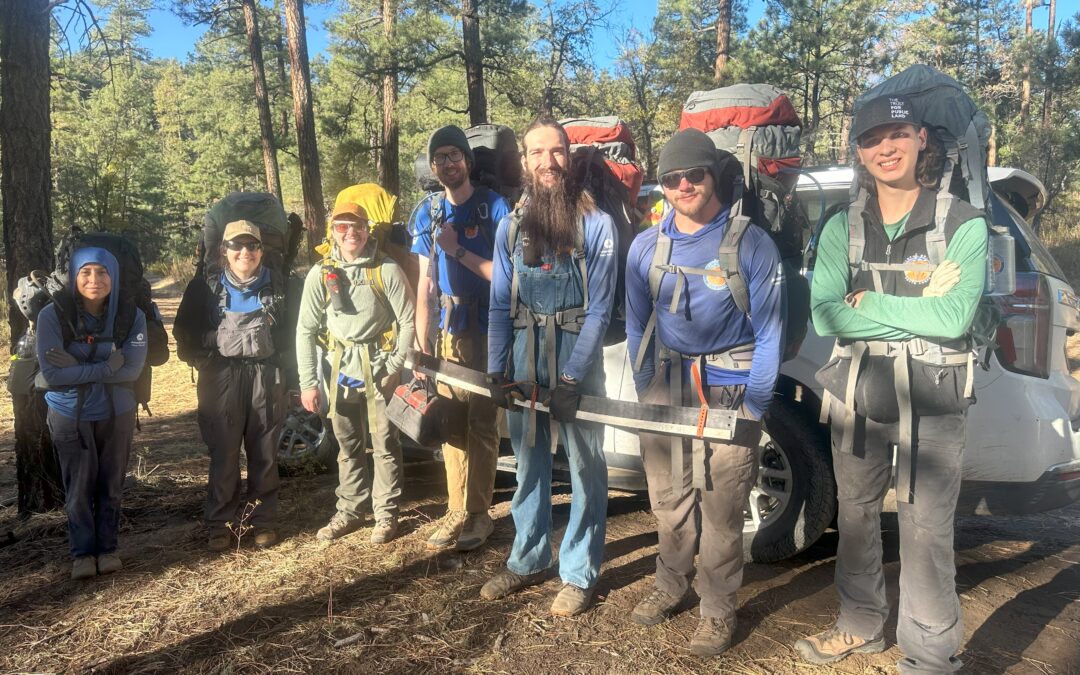The Black Range of New Mexico
By Michael McDaniel (he/him), Field Technical Specialist

In the month of October, I had the pleasure of accompanying two Rocky Mountain Youth Crews (RMYC) as they worked on the Continental Divide Trail in the Black Range of the Gila National Forest. The Black Range, and the Aldo Leopold Wilderness in particular, recently experienced severe resource damage from two high-impact fires: the Black Fire of 2022 and the Silver Fire of 2013. These crews were tasked with removing hazardous, burnt trees with chainsaws outside the wilderness, and logging out fallen trees with crosscuts and redefining the trail within the wilderness.
According to Rocky Mountain Youth Corps’ website, “RMYC was founded in 1995 by a group of dedicated parents and community leaders who recognized the cultural and economic challenges within New Mexico’s communities.” Now, the organization “engages about 200 Corpsmembers per year with twenty full-time employees” and contributes to many of the trail work and conservation projects across the state of New Mexico. Conservation corps in all five states through which the CDT is routed play a role in maintaining our trail.
In the Aldo Leopold specifically, maintaining the trail is no small task. Ninety percent of the wilderness was impacted in the Black Fire; 325,133 acres of state, private and National Forest lands were blackened in what became New Mexico’s second-largest historical wildfire. Forty-one miles of the Continental Divide Trail were affected.
When a wild place burns, a cascade of events may then occur: The trees and vegetation die, and the soil degrades and loses its ability to hold its ground. This opens the door for large quantities of unbound soil (and trail tread) to get washed out in a flood. The trail must then be reestablished, cleared of fallen trees, and sometimes, it must be completely remade.
Despite this heavy workload, I had a wonderful time partnering with Crew 6 and Crew 9. From Crew Leader to Crew Member to support staff, RMYC was organized, dialed, and willing to work hard. It made me so happy to witness these crews performing so well. They helped us out in a rather inaccessible place. The Forest Service, for example, on two separate occasions agreed to pack ~500 lbs of water into the backcountry for the crosscut crew who had to walk four miles down the CDT from their vehicles just to reach the work! Nonetheless, these crews persevered through their challenges and accomplished great work.
There remains much work to be done in the Black Range, and crews like RMYC are going to continue to play a role in bringing the CDT back. I’m grateful for their efforts and look forward to the long-term recovery of one of the wildest spaces along the entire Continental Divide National Scenic Trail corridor.



